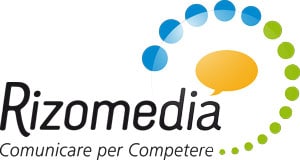C-LED offers a versatile, ecological response to the need to sanitise rooms, surfaces and machines, with researchers hard at work to meet the market’s fast-changing needs.
Click here to download some images and the press release in .doc e .pdf
IMOLA (Bologna, Italy), 26 June 2020. Ultraviolet light produced by LED lamps can be used to stop the spread of bacteria, spores and viruses without using any chemicals. C-LED, a research-focused company operating in the lighting sector, is pushing ahead on the innovation front by developing specific UV-C LED modules to help make rooms, machinery and production facilities safer.
C-LED-developed technology is designed for numerous fields as it has the characteristic of being easily integrated into existing systems and, at the same time, it gives new projects added value. For example, UV-C LED modules by C-LED can be integrated into household appliances, shared equipment (e.g. dishwashers) or specific sanitizing cabinets. They can protect us from contamination by irradiating surfaces, when, for example, we use an ATM, when we use a pay machine at the car park, when buying a metro ticket, when grabbing a snack from a vending machine or when we take the lift. Last but not least, they can also be used extensively in lighting design or on production lines.
C-LED is sharply focused on developing solutions with UV-C technology, as Managing Director Alessandro Pasini, points out: “Our UV-C LED modules are extremely versatile. They can be integrated into a great many applications being developed by our customers, especially now, in every sector. Because of the health emergency, in fact, we’re receiving a huge number of requests and are working hard to respond to every single one so we can, as soon as possible, design the countless customised solutions requested of us”.
Ultraviolet light is already used in a few restricted areas for sanitizing instruments. Now, a study published in ASC Photonics (a scientific journal published by the American Chemical Society) confirms its effectiveness on air, water and surfaces. The study was conducted by a team from the Solid State Lighting & Energy Electronics Center at the University of California.
In Italy, this field of study has involved INAF (the National Institute of Astrophysics). In fact, together with the University of Milan, the National Cancer Institute of Milan and the IRCCS Don Gnocchi Foundation, INAF experimentally assessed the effects of UV-C irradiation on the Sars-Cov-2 virus by testing the lighting levels that neutralise the virus or inhibit its replication. (1)
Investigations into this technology are likely to continue for some years and are expected to yield new discoveries. “UV technology applied to LED lamps”, explain C-LED’s researchers, “can be effective in reducing the amount of bacteria, the virulence of harmful organisms and the presence of pathogens while breaking down volatile organic compounds, resulting in a reduction of foul odours in general. Germicidal irradiation with ultraviolet rays appears to be an effective method for sanitising and disinfecting air and the surfaces of materials”.
“By using shorter-wavelength ultraviolet light, around 260 nm”, conclude C-LED’s researchers, “it might be possible to destroy the DNA or RNA of bacteria and viruses, leaving them unable to perform some of their vital cellular functions, thus resulting in the complete sterilisation of water and surfaces”.
(1) Link to source: Lampade Uv-C inibiscono il virus Sars-Cov-2 | MEDIA INAF

